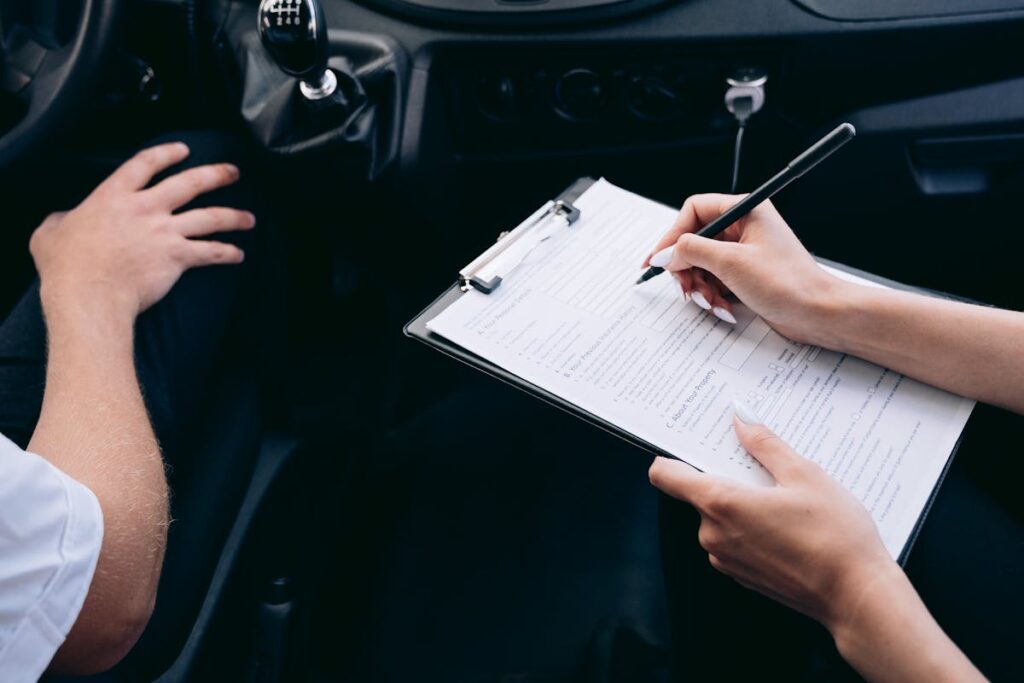Understanding the various types of car insurance coverage is essential for any driver seeking peace of mind and financial security on the road. From liability insurance, which covers costs when you’re at fault, to extensive policies that safeguard against unexpected non-collision damages, each type offers unique protections. With options such as Personal Injury Protection and uninsured motorist coverage, drivers can tailor their policies to meet specific needs. But how do these coverages interplay to guarantee optimal protection?
Liability Insurance Coverage
When exploring the intricacies of car insurance, understanding liability insurance coverage is essential, as it serves as the foundation of most auto insurance policies. This important coverage protects drivers by covering the costs associated with liability claims, which arise when they are at fault in an accident causing injury or damage to others. A critical component of this coverage is the liability limits, which dictate the maximum amount the insurer will pay per accident. These limits are typically expressed as split limits, covering bodily injury per person, bodily injury per accident, and property damage. Selecting appropriate liability limits is important, as they guarantee adequate protection against significant financial losses. Ultimately, liability insurance is indispensable for safeguarding one’s financial well-being and providing peace of mind.
Collision Insurance Coverage
Collision insurance coverage is an important component of a thorough auto insurance plan, specifically designed to cover the cost of repairs to a policyholder’s vehicle after an accident involving another object or vehicle. Understanding the coverage limits is vital, as they determine the maximum amount an insurer will pay, while deductibles and premiums influence the out-of-pocket expenses and monthly costs respectively. By evaluating these elements, individuals can make informed decisions tailored to their financial needs and driving habits.
Collision Coverage Basics
While managing the complexities of car insurance, understanding the essentials of collision coverage is essential for any vehicle owner. Collision coverage is designed to cover the cost of collision repair for one’s vehicle following a mishap, irrespective of fault. This insurance is particularly beneficial when accident claims arise, as it guarantees the vehicle is restored to its pre-accident condition. By covering damages resulting from collisions with other vehicles or objects, such as trees or guardrails, it offers peace of mind and financial protection. For those who depend heavily on their cars, collision coverage can be a fundamental investment, minimizing out-of-pocket expenses for repairs. Consequently, it plays a significant role in maintaining the vehicle’s value and promoting road safety.
Coverage Limits Explained
Understanding coverage limits is a pivotal aspect of collision insurance, as it dictates the maximum amount an insurer will pay for vehicle repairs after a collision. These limits are integral to the coverage types available within a policy, guaranteeing that a policyholder comprehends the extent of financial protection they receive. Different coverage types may offer varying limits, which directly influence the overall coverage benefits. Opting for higher limits can provide peace of mind, as it guarantees more extensive protection against unexpected repair costs. However, selecting appropriate limits requires careful consideration, balancing premium costs against potential out-of-pocket expenses. Evaluating one’s vehicle value and financial situation aids in making informed decisions, maximizing the benefits of collision insurance coverage while safeguarding against unforeseen expenses.
Deductibles and Premiums
Selecting appropriate coverage limits is just one aspect of optimizing collision insurance; another vital consideration involves understanding deductibles and premiums. Deductible types, such as fixed or variable, determine the out-of-pocket expenses a policyholder faces before insurance pays out. A higher deductible often results in lower monthly premiums, making it a strategic choice for those willing to assume more upfront risk. Conversely, opting for a lower deductible may increase premiums but offers peace of mind with reduced immediate costs during a claim. Premium factors, including vehicle make and model, driving history, and location, greatly influence the cost of collision insurance. Evaluating these elements helps individuals tailor their policies to balance financial protection and affordability effectively. Understanding these dynamics is essential for informed insurance decisions.
Comprehensive Insurance Coverage
When it comes to safeguarding one’s vehicle against a myriad of unforeseen events, extensive insurance coverage stands as an important component in a well-rounded auto insurance policy. Comprehensive insurance offers substantial benefits, covering damages not involving collisions, such as theft, vandalism, fire, or natural disasters. This type of insurance guarantees that vehicle owners are protected from significant repair costs resulting from non-collision incidents.
However, it is vital to understand the coverage exclusions associated with comprehensive insurance. Typically, this policy does not cover damages from regular wear and tear, mechanical breakdowns, or intentional harm. By recognizing these exclusions, policyholders can make informed decisions and avoid unexpected expenses. Comprehensive insurance consequently serves as an invaluable layer of protection, offering peace of mind against various potential perils.

Personal Injury Protection (PIP)
Personal Injury Protection (PIP) is an essential component of car insurance that addresses the financial implications of injuries sustained in an accident by covering medical expenses and compensating for lost wages. Unlike other types of coverage, PIP provides immediate access to necessary funds, ensuring that policyholders can focus on recovery without the added stress of financial burdens. By including PIP in their insurance policy, drivers can secure peace of mind, knowing they are protected against the unforeseen costs associated with collisions.
Medical Expenses Coverage
While traversing the complexities of car insurance policies, understanding Medical Expenses Coverage, also known as Personal Injury Protection (PIP), is vital for thorough financial security. This coverage guarantees that medical expenses incurred in an accident are addressed promptly, regardless of fault. It is important to comprehend the medical expense limits within a policy, as these determine the maximum amount payable for medical bills. By setting appropriate limits, policyholders can safeguard themselves against unforeseen financial burdens.
The medical claim process is streamlined under PIP, allowing for efficient handling of claims. This process typically involves submitting necessary documentation to the insurance provider to receive compensation swiftly. Ultimately, Medical Expenses Coverage provides peace of mind, ensuring that individuals are not left grappling with overwhelming medical costs post-accident.
Lost Wages Compensation
Many drivers find themselves unprepared for the financial strain that can accompany lost wages after an accident, making Lost Wages Compensation under Personal Injury Protection (PIP) an invaluable part of car insurance coverage. This coverage guarantees that individuals are not left struggling financially while recovering from injuries. PIP steps in to cover a portion of the lost income during the recovery period, easing the burden on accident victims. When filing compensation claims, policyholders must provide documentation, such as medical records and employer statements, to substantiate their inability to work. This safety net is particularly essential for those without alternative income sources. By including Lost Wages Compensation in their insurance plans, drivers can safeguard their financial stability in the aftermath of unforeseen accidents.
Uninsured and Underinsured Motorist Coverage
Occasionally overlooked yet fundamentally important, uninsured and underinsured motorist coverage serves as a crucial safety net for drivers facing accidents with individuals lacking adequate insurance. In today’s unpredictable driving environment, uninsured drivers pose a significant risk. This type of coverage provides financial protection when encountering motorists who fall short of carrying sufficient insurance. Designed to address scenarios where at-fault drivers have no insurance or inadequate coverage limits, it shields policyholders from bearing the financial burden. By filling in the gaps left by the negligent party’s insurance, it covers expenses related to vehicle damage and medical costs. Given the prevalence of uninsured drivers, this coverage is a wise addition to any insurance policy, offering peace of mind and thorough protection on the road.
Medical Payments Coverage
How can drivers guarantee they are adequately protected in the event of an accident? Medical Payments Coverage, often overlooked, offers vital benefits by providing medical expense reimbursement for injuries sustained by drivers and passengers, regardless of fault. It simplifies the injury claim process, guaranteeing timely coverage of medical bills, which can include hospital visits, surgery, and rehabilitation. This coverage can also extend to injuries sustained as a pedestrian or bicyclist if struck by a vehicle. Unlike health insurance, this policy guarantees immediate financial support, preventing out-of-pocket expenses during a potentially stressful time. By investing in Medical Payments Coverage, drivers safeguard their financial stability and peace of mind, knowing they have a safety net to cover unexpected medical costs following an accident.
Gap Insurance
Gap Insurance serves as an essential safety net for drivers who finance or lease their vehicles, offering financial protection that standard auto insurance may not cover. When a vehicle is declared a total loss due to an accident or theft, the settlement from the auto insurance might not cover the outstanding balance on the car loan. Here, gap insurance benefits become apparent by bridging the financial gap between the vehicle’s depreciated value and the owed amount. To qualify, gap insurance requirements typically include having a new or recently financed vehicle. This coverage can be invaluable, particularly for those who have a longer loan term or minimal down payment, as it protects against potential financial burdens in the unfortunate event of a total vehicle loss.
Rental Reimbursement Coverage
Why should drivers consider rental reimbursement coverage as part of their auto insurance policy? This coverage proves vital when a vehicle is undergoing repairs due to a covered claim. It enables policyholders to maintain their daily routine by covering the cost of a rental car. Without it, drivers might face unexpected expenses during repair periods. The reimbursement process is typically straightforward: the insured rents a vehicle, submits receipts to their insurer, and receives reimbursement up to the policy limits. This not only provides financial relief but also supports uninterrupted mobility. As accidents can happen unexpectedly, having rental reimbursement coverage guarantees that drivers are not left stranded, emphasizing its role as a strategic addition to any thorough auto insurance policy.
Roadside Assistance Coverage
In addition to rental reimbursement, drivers should also consider the benefits of roadside assistance coverage as part of a thorough auto insurance policy. This coverage provides essential support during unexpected vehicle breakdowns, offering a range of emergency services that can be invaluable in dire situations. Roadside assistance benefits typically include towing, battery jump-starts, flat tire changes, and fuel delivery, ensuring drivers aren’t stranded on the road for extended periods. Furthermore, lockout services are often included, providing peace of mind for those accidentally locked out of their vehicles. These extensive emergency services not only enhance driver safety but also reduce the stress and inconvenience associated with car troubles. It is a prudent choice for those seeking a well-rounded auto insurance package.
Frequently Asked Questions
What Is the Difference Between Full Coverage and Liability-Only Insurance?
Full coverage benefits surpass basic liability coverage limits by protecting against damages to the policyholder’s vehicle and third parties. Liability-only insurance, however, restricts protection to third-party damages, making full coverage a more thorough choice.
How Does My Driving Record Affect My Car Insurance Premiums?
A driver’s history greatly impacts premium calculation. Insurers assess past violations and accidents to predict future risk, often leading to higher premiums for those with poor records. Maintaining a clean driving history can considerably reduce insurance costs.
Can I Insure a Car That Isn’t Registered in My Name?
Insuring non-owner vehicles is possible through non-owner insurance or temporary coverage. This allows individuals to obtain insurance for a car not registered in their name, providing peace of mind and financial protection in various situations.
How Does Car Insurance Work for a Leased Vehicle?
For a leased vehicle, insurance coverage options typically require extensive and collision coverage. Leased vehicle requirements often mandate higher liability limits to protect the leasing company’s interest, ensuring adequate protection against potential financial losses.
Do Car Insurance Policies Cover International Travel?
Car insurance policies vary, but international coverage is typically limited. Policyholders should verify travel restrictions with their insurer. It’s essential to understand specific terms and potential need for additional coverage when driving abroad to guarantee protection.

